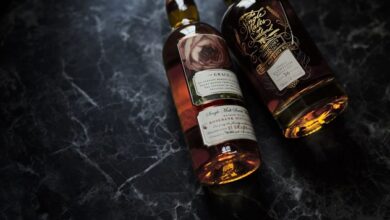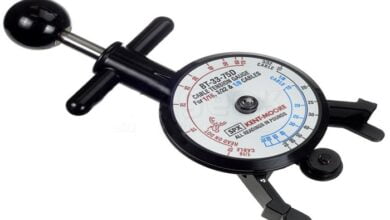Business Casual Footwear for Effortless Elegance Stylish

Footwear is often the first thing people notice when you walk into a room. In today’s professional world, the concept of business casual footwear has become essential for striking the right balance between formal professionalism and relaxed comfort.
For decades, work attire was dominated by rigid dress codes—polished Oxfords for men, sharp heels for women. But as work culture evolved, so did our shoes. Today, business casual shoes represent a fusion of style and practicality, allowing individuals to maintain authority while feeling comfortable in everyday environments.
In this detailed guide, we’ll explore the world of business casual footwear for everyday style: what it means, how to choose the 99math home right pair, styling tips for men and women, brand recommendations, and the future of professional footwear.
Personal Details / Quick Insights Table
| Aspect | Details |
|---|---|
| Focus Keyword | Business Casual Footwear |
| Ideal Wearers | Professionals, Office Workers, Entrepreneurs, Students |
| Style Goal | Blend of comfort, elegance, and versatility |
| Key Footwear Types | Loafers, Brogues, Oxfords, Derby Shoes, Ballet Flats, Block Heels |
| Materials | Leather, Suede, Knit Fabric, Sustainable Alternatives |
| Occasions | Office, Meetings, Business Travel, Casual Outings |
| Top Brands | Clarks, Cole Haan, Allen Edmonds, Everlane, Hush Puppies |
| Current Trend | Sustainable & multi-functional footwear |
| Future Outlook | Smart shoes, ergonomic soles, eco-friendly materials |
What Exactly is Business Casual Footwear?
Business casual footwear refers to shoes that balance the professional look of formal wear with the comfort and flexibility of casual shoes.
It’s less rigid than traditional corporate attire but still polished enough for office meetings, networking events, and semi-formal occasions.
Key Characteristics
-
Smart, not flashy: Neutral or versatile colors (black, brown, navy, beige).
-
Comfortable yet elegant: Cushioned insoles and supportive design.
-
Multi-purpose: Can transition from the office to after-hours events.
-
Material diversity: Leather, suede, fabric blends, and sustainable materials.
Examples
-
Men: Loafers, Derby shoes, Chelsea boots.
-
Women: Ballet flats, block heels, loafers, kitten heels.
Business Casual Footwear for Men
When it comes to men’s style, shoes are often the foundation of the entire outfit. Men’s business casual footwear should be stylish, versatile, and office-appropriate without looking overly formal.
Essential Men’s Shoe Styles
-
Loafers – Timeless, slip-on design, perfect for office and semi-formal events.
-
Derby Shoes – Slightly less formal than Oxfords, with open lacing for comfort.
-
Chelsea Boots – Sleek, ankle-length boots that pair well with trousers or chinos.
-
Brogues – Characterized by decorative perforations, blending formality with flair.
-
Dress Sneakers – Minimalist leather sneakers for a modern twist on work attire.
Color & Styling Tips
-
Stick to black, brown, or burgundy for formal tones.
-
Pair with chinos, slacks, or dark denim for a neat casual look.
-
Invest in quality leather care to maintain polish.
Business Casual Footwear for Women
Women’s business casual shoes offer greater flexibility in styles, yet the challenge is balancing elegance with comfort for long office hours.
Essential Women’s Shoe Styles
-
Ballet Flats – Comfortable, minimal, and elegant.
-
Block Heels – Offer height without sacrificing stability.
-
Loafers – Classic and chic, often paired with trousers or skirts.
-
Ankle Boots – Perfect for colder months while staying professional.
-
Kitten Heels – Low, stylish heels that provide sophistication without discomfort.
Color & Styling Tips
-
Neutrals like beige, navy, or black are safe choices.
-
Pointed-toe flats create a sharper, professional silhouette.
-
Avoid overly flashy designs—minimalist elegance works best.
The Role of Comfort and Ergonomics
A major shift in recent years has been the happymod apk focus on comfort in professional footwear. People are no longer willing to sacrifice health for style.
Features to Look For
-
Cushioned Insoles for long standing hours.
-
Arch Support for posture and back health.
-
Breathable Materials to prevent discomfort.
-
Non-slip Soles for safety in office environments.
Brands like Cole Haan, Clarks, and Hush Puppies have mastered combining style with ergonomic design.
Matching Business Casual Footwear with Outfits
Shoes should not be an afterthought—they complete the entire business casual look.
For Men
-
Loafers + chinos + polo = modern office look.
-
Chelsea boots + tailored trousers + blazer = smart casual elegance.
-
Brogues + dark jeans + button-down = professional yet relaxed.
For Women
-
Ballet flats + pencil skirt + blouse = timeless office attire.
-
Block heels + dress pants + blazer = professional and chic.
-
Ankle boots + midi dress + cardigan = stylish and practical.
Global Trends in Business Casual Footwear
The business casual shoe industry is rapidly evolving with fashion and technology.
Current Trends
-
Sustainable Footwear: Eco-friendly materials like recycled leather and plant-based fabrics.
-
Hybrid Styles: Sneakers with formal designs.
-
Unisex Designs: Gender-neutral footwear lines.
-
Smart Footwear: Shoes with sensors tracking steps and posture.
Cultural Variations
-
In Asia: Loafers and slip-ons dominate office wear.
-
In Europe: Brogues and derby shoes are staples.
-
In the US: Dress sneakers are increasingly popular.
Business Casual Footwear at the Workplace
Footwear choices also depend on company dress codes.
-
Corporate Offices: Loafers, Oxfords, block heels.
-
Startups: More flexibility—dress sneakers, flats, boots.
-
Creative Agencies: Stylish and trendy options, even bold colors.
Understanding your workplace culture ensures your footwear is appropriate without being too formal or too casual.
Buying Guide: Choosing the Right Pair
Before purchasing, consider:
-
Durability: High-quality leather or suede lasts longer.
-
Comfort: Test insoles and arch support.
-
Versatility: Choose shoes that match multiple outfits.
-
Budget: Mid-range brands offer style and value.
Popular recommended brands include:
-
Men: Allen Edmonds, Cole Haan, Clarks.
-
Women: Everlane, Naturalizer, Sam Edelman.
Care and Maintenance Tips
Your shoes are an investment—proper care extends their life.
-
Polish leather shoes regularly.
-
Use shoe trees to maintain shape.
-
Avoid water damage—use protective sprays.
-
Rotate footwear to prevent wear.
Future of Business Casual Footwear
The future promises more innovation in this space.
-
Eco-friendly manufacturing will dominate.
-
Smart shoes with fitness and comfort sensors will rise.
-
Custom 3D-printed footwear tailored to foot shape.
In short, the future of business casual footwear is sustainable, intelligent, and style-driven.
Frequently Asked Questions (FAQ)
Q1: What counts as business casual footwear?
A: Shoes that balance professional style with comfort—like loafers, flats, and derby shoes.
Q2: Can sneakers be considered business casual?
A: Yes, if they are minimalist dress sneakers in leather or suede with neutral colors.
Q3: What shoes should be avoided?
A: Flip-flops, athletic sneakers, or flashy high heels are not business casual.
Q4: Are business casual shoes the same for men and women?
A: While styles differ, the principle is the same—professional yet comfortable.
Q5: What’s the future of business casual footwear?
A: Expect eco-friendly, ergonomic, and even smart shoe technologies.
Conclusion
Business casual footwear blends elegance with comfort, making it the perfect choice for everyday style in modern workplaces.
As professional culture shifts, these shoes are no longer optional—they are a necessity for anyone seeking confidence, versatility, and sophistication in their daily attire. Whether you’re a man opting for timeless loafers or a woman choosing chic block heels, the right pair of business casual shoes can transform your entire look.




